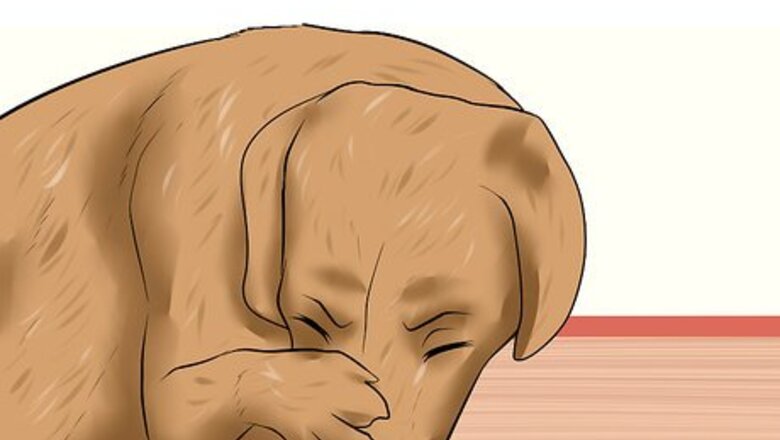
views
Recognizing the Symptoms of a Corneal Ulcer

Watch for your dog rubbing his eye. Since corneal ulcers are painful, the dog’s eye will bother him because it hurts. This means your dog may rub his eye. Your dog might also squint with the affected eye and hold it partially closed. The discomfort and pain from the ulcer may also cause your dog’s eye to water. Your dog might do this by rubbing the affected side of the face along the ground or rubbing at the eye with a paw. To figure out if your dog is squinting, look at the dog’s face. If one eye looks smaller than the other, then the dog may be squinting. If you suspect your dog has a corneal ulcer, put an Elizabethan collar on it so it can't scratch its eye anymore.
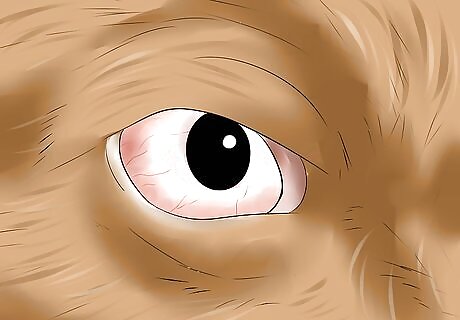
Watch for red or cloudy eyes. If your dog has a corneal ulcer, the white part of the eye may be red or have a pinkish color. The surface of the cornea is usually clear, but if your dog has an ulcer it may have a cloudy or milky appearance. This might look like a film over the eye.
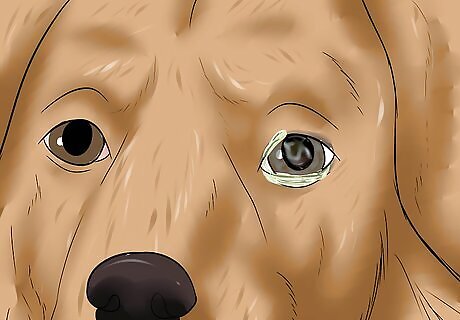
Monitor for discharge. If your dog has a corneal ulcer, he may also have a discharge from the eye. The discharge may be bloody or even pus-filled. This discharge may gather in the corner of the eye, nearest to his nose. Sometimes the area beneath the affected eye may be wet or damp.
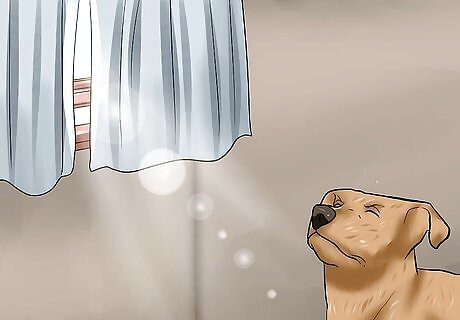
Look for eye sensitivity. Because of the pain and discomfort of the eye, your dog may have a new sensitivity to light. He may shy away from bright lights, or squint in bright areas. Your dog may also keep the affected eye closed. Your dog may also flinch if he goes from a darker inside to bright sunshine outside.
Treating Corneal Ulcers

Take your dog to the vet. To get a proper diagnosis for your dog, you need to take him to the vet. The vet will perform an examination of both eyes to determine which eye is the problem, what is wrong with it, and how inflamed or sore it may be. The vet will probably also examine the eyelids and eyelashes to look for rubbing on the surface of the cornea, such as an inturned eyelash. As well as treating the ulcer, it is important to correct any underlying health problems, such as dry eye or underactive thyroid glands, to prevent the problem recurring. Your vet may perform a full examination to determine if your dog has any other problems related to the ulcer.
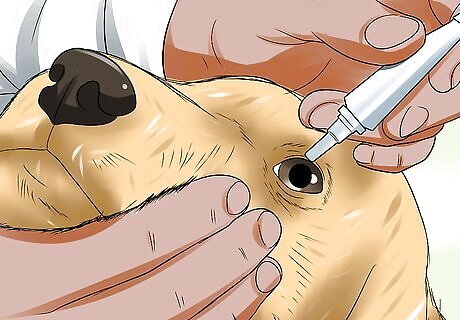
Treat the ulcer with medicine. Your vet needs to inspect the eye and record the size, shape, and depth of the ulcer. If the ulcer is superficial and only affecting the epithelial layer, such as a minor scratch, then all that may be needed is a drop to keep the surface of the eye moist so that healing can take place. For ulcers affecting the stroma, an antibiotic drop is prescribed to prevent infection and keep the eye moist. However the antibiotic is only effective for a few hours at a time and so needs to be reapplied every four to six hours, or as advised by your veterinarian. #*Most ulcers heal within five to seven days, and slower healing than this can be indicative of a problem. Sometimes the vet fits a special 'bandage' contact lens in the affected eye. This aids healing as it keeps moisture in and dust out, and can speed up the recovery time. EXPERT TIP Ray Spragley, DVM Ray Spragley, DVM Veterinarian Dr. Ray Spragley is a Doctor of Veterinary Medicine and the Owner/Founder of Zen Dog Veterinary Care PLLC in New York. With experience in multiple institutions and private practices, Dr. Spragley’s specializations and interests include non-surgical management of cranial cruciate ligament tears, Intervertebral Disk Disease(IVDD), and pain management in osteoarthritis. Dr. Spragley holds a BS in Biology from SUNY Albany and has a Doctor of Veterinary Medicine degree (DVM) from Ross University School of Veterinary Medicine. He is also a Certified Canine Rehabilitation Therapist (CCRT) through the Canine Rehab Institute as well as a Certified Veterinary Acupuncturist (CVA) through Chi University. Ray Spragley, DVM Ray Spragley, DVM Veterinarian Use drops and collars to address corneal ulcers. Corneal ulcers, often caused by trauma and scratching, can be treated using antibiotics and anti-inflammatory medicated eye drops. You can also utilize an Elizabethan collar to stop your dog from rubbing the tender area. Deeper ulcers not responding may need specialized vet procedures to promote healing.
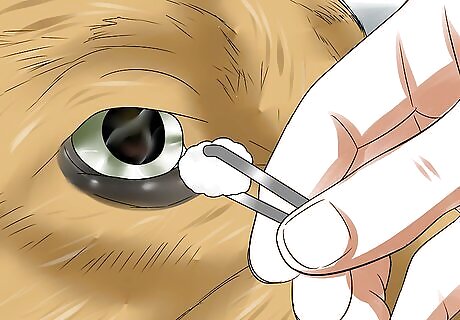
Undergo additional treatment for any complications. One complication that prevents an ulcer healing is if a rim of damaged epithelia clings to the edge of the ulcer. The cornea heals by sending in new cells from the side, and epithelia tags act as a barrier through which the healing cells cannot pass. If the vet diagnoses this complication, he or she will use a cotton tip to gently rub the surface of the eye and abrade away the unwanted cells. This should then let healing continue. On some occasions, ulcers can be problematic to heal, especially those in Boxers where there is an underlying anatomical problem with the glue holding the layers together. In these cases, the vet may put drops of local anesthetic into the eye and then perform a minor procedure call a grid keratotomy. This involves making tiny partial thickness puncture holes with a hypodermic needle, through the layers of the cornea. This then provides a key for the healing cells to cling onto to allow healing to take place. On rare occasions, the ulcer is so deep that Descemet's membrane is the last line of defence and it bulges outward. This is potentially very serious because if the membrane ruptures the eye will perforate. This requires a specialist procedure whereby a surgeon grafts a flap of cornea from another part of the eye to cover and repair the hole.
Understanding Corneal Ulcers
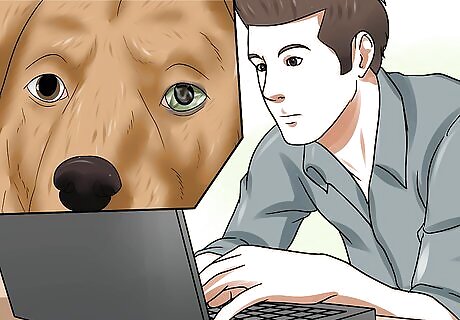
Learn what a corneal ulcer is. The transparent layer that is the cornea is made up of three layers. The top layer, which is exposed to the air, is the epithelial layer. Beneath this is the middle and thickest layer, which is called the stromal layer, and at the bottom is a tough lining membrane called Descemet's membrane. Corneal ulcers can be of any depth. A superficial scratch or abrasion only affects the epithelial layer and often heals quickly. An ulcer is deeper and typically erodes down through the epithelia and into the stroma, which is the main structural layer. If the ulcer eats deeper still through the complete thickness of the stroma, then only the thin Descemet's membrane is left to stop the eye from perforating, which is potentially very serious. It is not possible to tell with the naked eye which layers of the eye are affected. It requires special stains and magnification, and therefore if you suspect damage on the surface of your dog's eye, a vet trip is essential.
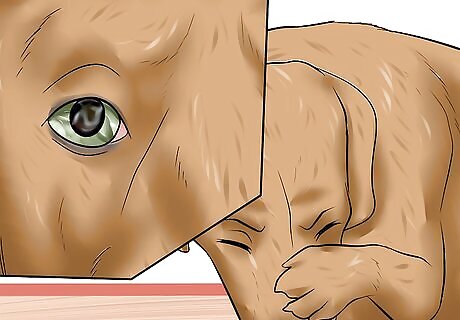
Identify the causes of a corneal ulcer. The most common cause of a corneal ulcer is trauma, such as a scratch to the surface of the eye or grit that got in and rubbed around. Anything that impacts the health of the eye can weaken its ability to respond to injury and predispose to ulcers. This includes conditions such as Cushing's disease, underactive thyroid glands, and diabetes. Some dogs suffer from a condition called dry eye where they are unable to produce adequate tear fluid to moisturize the cornea, which leads to it drying out and ulcer formation. Some breeds, such as the Boxer, suffer from a lack of cohesiveness between the cells of the cornea, which leads to them flaking away and ulcer formation.

Identify which breeds are prone to corneal ulcers. Some breeds are more prone to corneal ulcers than other dogs. Breeds with large bulbous eyes, such as Pekingese, pugs, and other squash-faced breeds, are inclined to develop ulcers since their eyes provide a large surface area of cornea exposed to the air. These dogs also get in-turned eyelashes due to the shape of their eyes. This can scour the surface each time the animal blinks, leading to ulcer formation.












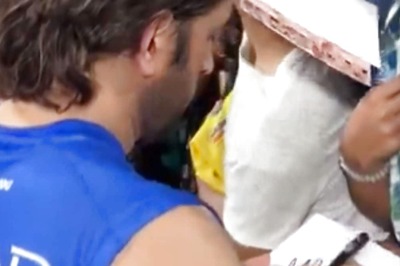


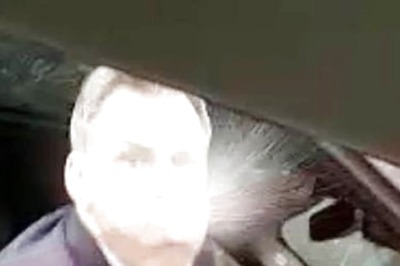


Comments
0 comment